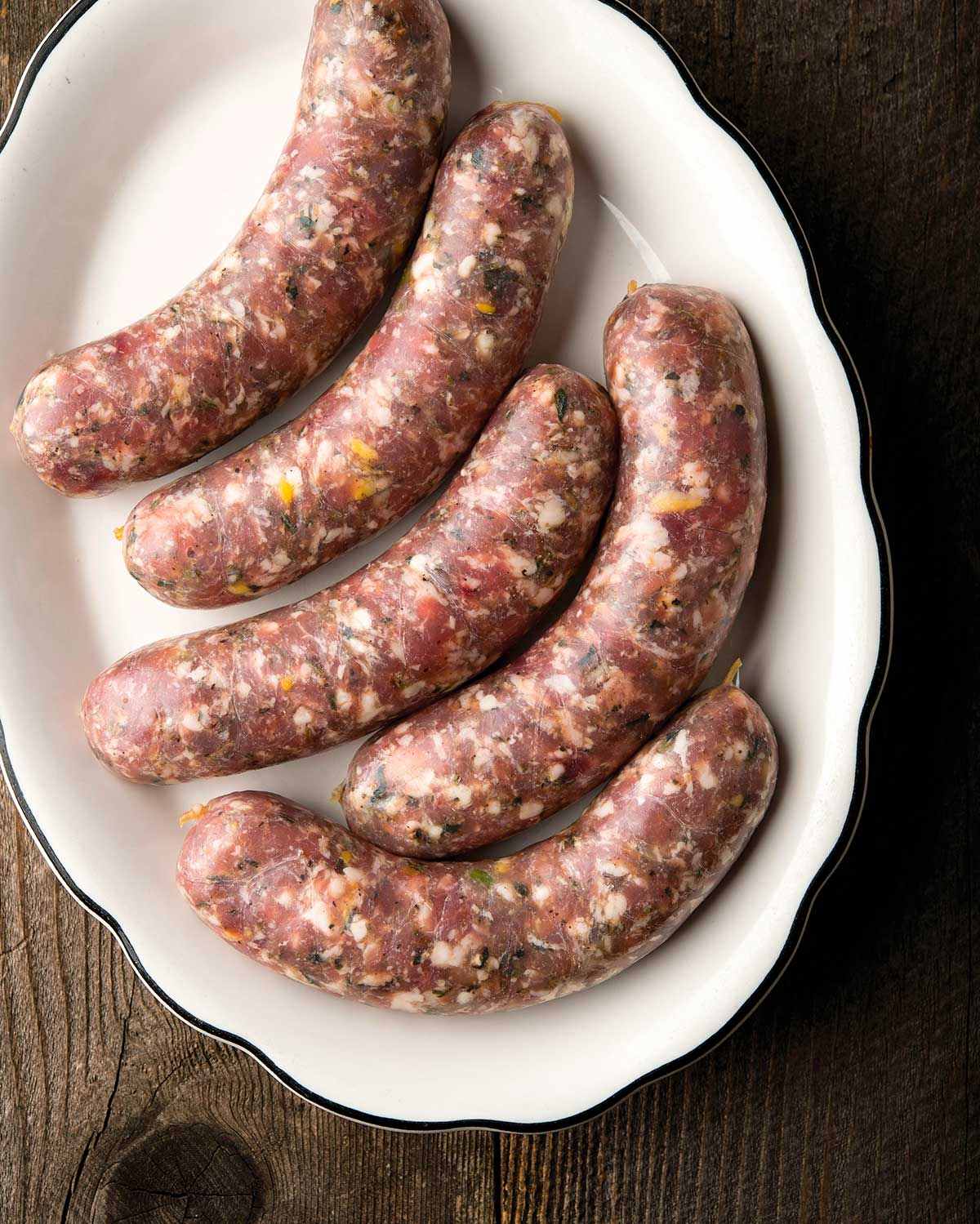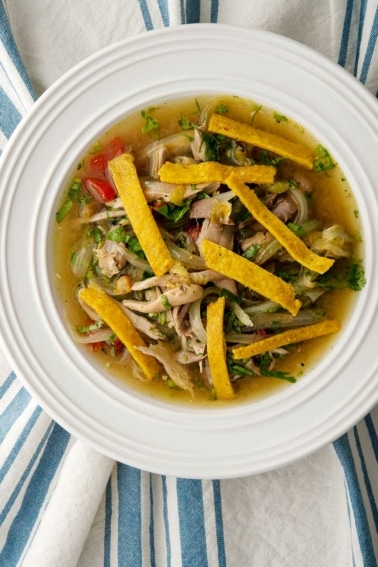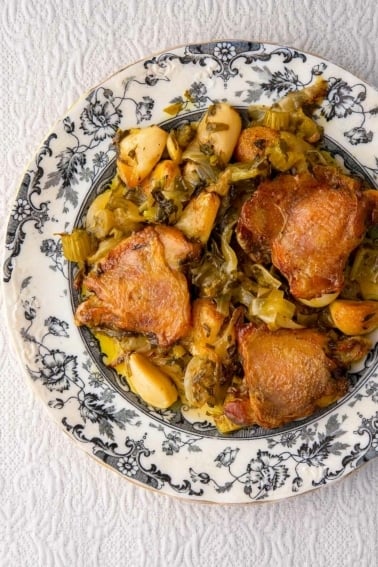As an Amazon Associate I earn from qualifying purchases.
It is not uncommon to come home with enough pheasants to make pheasant sausage, especially if you hunt pen-raised birds. This recipe mixes pheasant and pork with French Provencal flavors for a nice, light sausage great for summer grilling.

I originally developed this pheasant sausage recipe years ago, and it was for an old rooster, but since then have used the recipe for all varieties of upland game bird, from turkeys to grouse, partridges, as well as rabbit or pork.
And yes, pork is king, so feel free to use that instead. If you go all pork, use shoulder.
The flavors here are Mediterranean, sort of Provence meets Liguria in Italy: oregano, garlic, lemon, fennel and wine. It’s a link for summer grilling, or sandwiches, or alongside pasta tossed with greens.
If you have access to fresh oregano, use it. Grate the lemon zest fresh, peel and chop good garlic — green garlic is a nice touch if you are making pheasant sausage in late spring — and grind black pepper on the spot. These little touches will make a better-tasting sausage.
I use standard hog casings here. It doesn’t matter which diameter, but in my mind’s eye this is a pretty standard link, so maybe avoid the wide hog casings for things like bockwurst. Pheasant sausage is good in sheep casings, however, which you can buy in good butcher shops, or online.
This is not a sausage I would smoke. You want bright, fresh flavors and the smoking process would dull them.
Once you have your pheasant sausages made, they are good poached in beer or wine, slowly grilled over charcoal, browned in a pan over medium heat, or roasted in a 325°F oven for 20 minutes. Serve in a bun, or with your choice of starch and vegetable.
New to making sausage? You can find my detailed tutorial on how to make sausages at home here.
Pheasant Sausages
Ingredients
- 3 1/2 pounds pheasant meat, or use turkey or chicken
- 3/4 pound pork fat
- 34 grams kosher salt, about 2 tablespoons
- 1/4 cup chopped fresh oregano
- 10 grams cracked black pepper, about a tablespoon
- 5 cloves minced fresh garlic
- 10 grams fennel seed, about 1 tablespoon
- Grated zest of a lemon
- 1/2 cup Madeira wine, or white Port, or Marsala
Instructions
- Chill the meat until it is almost frozen by putting it in the freezer for an hour or so. Take out some hog casings and set in a bowl of very warm water.
- Chop meat and fat into chunks that will fit into your grinder. Mix in the salt, and, ideally, let this set in the fridge overnight; this helps the bind. You can skip this step if you are in a hurry, though.
- When you are ready to grind, take out half the fennel seeds and half the cracked black pepper. You'll want to add them right before you do that final mix. This keeps some spices whole, altering the sausage's texture, making eating it more interesting. Combine the other half of the fennel and pepper, garlic and herbs with the meat, mix well with your hands and grind through your meat grinder using the coarse die, about 6.5 mm. If your room is warmer than 70°F, set the bowl for the ground meat into another bowl of ice to keep it cold.
- Chill the meat for another 30 minutes, then grind half of it through the fine die. Why bother? Because there will be a lot of stray silverskin in an old bird. Grinding to a finer level will make eating the sausage easier without getting any gristly bits. You can skip this if all you are using are breasts.
- Add the wine and lemon zest, then mix thoroughly either using a Kitchenaid on low for 60 to 90 seconds or with your (very clean) hands. This is important to get the sausage to bind properly. Once it is mixed well, put it back in the fridge.
- Stuff the sausage into the casings. Fill whole casings first. Then twist off links by pinching the casing down and twisting it; you want it to be about 5 to 6 inches long. Twist first away from you, then towards you. This helps the links stay tight. Or you could tie them off with butcher's string. (This video shows how I make links.)
- Use a needle to pierce the skin where there are any air bubbles. Gently twist-tighten the link to remove any air pockets. Hang the sausages in the kitchen for an hour, or up to overnight if you have a place to hang them in refrigeration. Once the sausages have dried a bit, put in the fridge until needed. They will keep for a week in the fridge.
Notes
Nutrition
Nutrition information is automatically calculated, so should only be used as an approximation.






This turned out well as “loose” sausage since I didn’t use casings. I salted the pheasant nearly 24 hours and it really did take out the gaminess. I did not have pork fat so used a combination of duck fat and chicken pound, much less than recommended in the recipe, but it turned out fine.
Will this recipe taste good using sage grouse?
I like it grilled but want to change things up.
Ron: Yes, you can use sage grouse here.
Just made this. Word for word, almost. I added some dried nonfat milk, perhaps quarter cup to aid in binding. Wonderful! I wouldn’t change a thing otherwise with the proportions and measurement. Salt level was on point. Note that casings come heavily pre salted. Make sure you soak like the directions said. Rinse several times afterwards. Also as said, it’s very important to keep things nice and cold. Good luck !
This turned out great! I basically doubled the recipe, but used 6lbs pheasant breast and 2.5lbs pork fat. I think the extra fat was needed. Also added a big pinch of crushed red. Ground once in a medium grind and otherwise followed directions. I like fennel but you may want to cut back if you’re sensitive to it. Only problem is getting more pheasant! Great recipe, Hank.
These are excellent made with chicken! I’m planning to make them again when we retire our laying hens this fall.